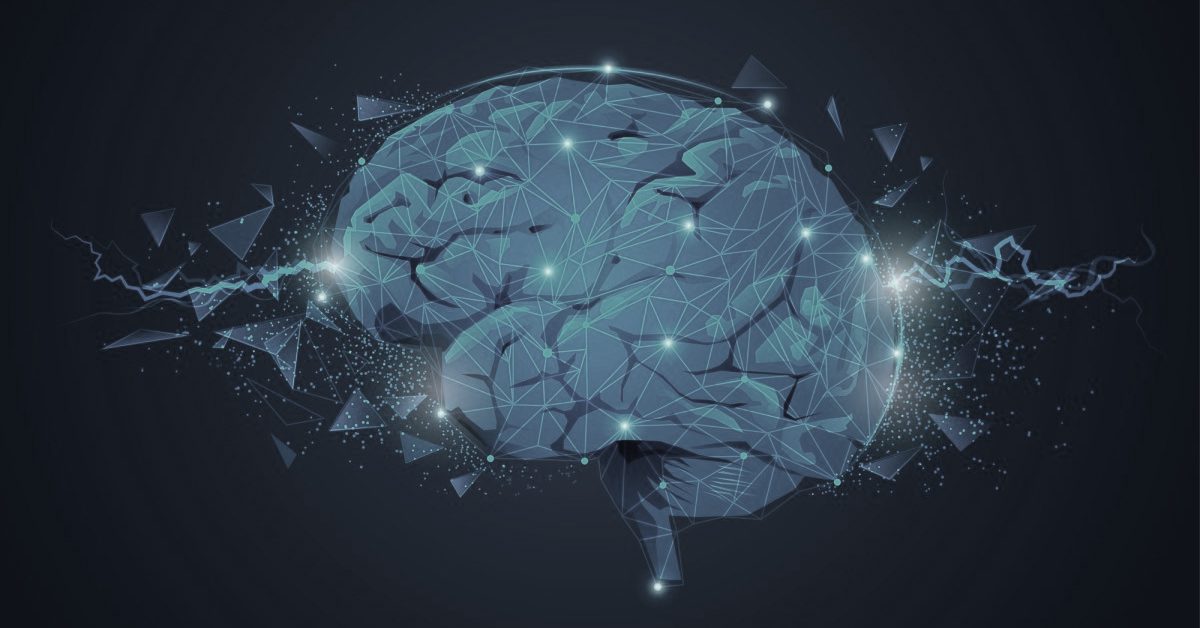Biography
Everything seemed against the birth, growth and development of Deepak, as if nature and nurture were conspiring against his very survival at every stage. However, he got past the onslaught of the catastrophic events around his birth, was diagnosed with Neurodevelopmental Disability (NDD) in his infancy, and associated conditions, namely ADHD in his childhood and Seizure Disorder in the adolescent phase. As a young adult he developed Dystonia (involuntary muscle spasm).
Deepak’s mother was an elderly primi at 32 years of age and conceiving for the first time 7 years after marriage and he was ‘a precious baby’. She was hypothyroid, on thyroid supplements, and was on psychiatric medication for 4 years prior to the delivery. The child was delivered by elective Caesarian section, and the mother suffered Post-Partum Haemorrhage (PPH) while the newborn had an Apgar score of 9, with some breathing difficulty.
Exploring the Condition
It was a non-consanguineous marriage. The father had a chronic health condition and his career never took off. It was thus a dysfunctional family, with an overanxious mother coping with a hyperkinetic child with NDD, the father shirking the responsibilities of fatherhood. Deepak’s father died when he was barely 6 years of age and the mother moved in with her parents with the child. There was a history of dementia on Deepak’s maternal side but no family history of suggestive of neurological, psychiatric or other general medical (including liver) condition to indicate Wilson’s disease (see box).
Motor milestones were delayed, and the child walked at 2 years. Unthinking TV viewing by the family saw Deepak at the same age jumping and clapping hands at every violent scene on the screen as if to cheer the hero and villain along! Language was delayed and he started saying a few meaningful words around 2½ years. At school at age 4 years, he had poor attention span, would not sit in one place, and his learning ability was average. He did not mingle with his peer group in school, and this awkwardness in social interaction continued, into adolescence and adulthood. It is around 5-6 years that Deepak started showing significant aggression, especially aimed at his mother.
He had fears and phobias, and was reluctant to board the public bus to school with his mother, resulting in frequent tantrums. The mother sought a psychiatric consultation for Deepak and he was prescribed a mild tranquiliser. He managed to get through mainstream school (with only one change of school in the 5th grade). While in middle school, he was seen by a Neurologist and diagnosed to have ADHD and was prescribed Dicorate ER (Divalproex) 250 mg – 1-0-1 and Modafinil (a stimulant drug) 100 mg – 1-0-0. In the 9th grade, he had difficulty coping with studies but managed to pass the 10th grade Board examination.
Before completing 12th grade examination, in 2009, Deepak had seizures manifesting as momentary loss of consciousness and stare. He had memory deficit following the seizure onset and could not cope with his studies. He dropped out of school as a consequence and subsequently developed frequent minor involuntary movements of the limbs, later dystonic turning of head/neck to the right, with facial grimacing. Lifting the arm spontaneously, without voluntary control, also followed. At this stage a Neurology Consultant put him on Tab.Trihexiphenidyl 2mg – 1-0-1.
Our Healing Approach
After comprehensive assessment at TriMed-Neurokrish, at the age of 22 years, a diagnosis was arrived at of Neurodevelopmental Disability with Neurobehavioural Syndrome, borderline intelligence and Movement Disorder (MD). The management of the patient was planned carefully taking into account the multiple challenges that had to be dealt with effectively. The patient was on polypharmacy, and the first step was modification of the drug regimen to optimize benefit. He was on Tab.Divalproex ER 250 mg – 1-0-1 and Lamotrigine 50mg – 0-0-1 was added to this regimen, as effective mood stabilizing combinations in such conditions. Along with this, a novel antipsychotic, Clozapine 25 mg – 0-0-1½ was prescribed; later Atomoxetine 25 mg – 1 -0-0 was started to control ADHD features; to improve attention and concentration and to reduce hyperkinetic behaviour. Modifinil was eventually tapered and stopped as was Dicorate.
The patient did well on this new drug regimen with no further seizures and reduction in the frequency of involuntary motor disturbances. Multivitamin, Calcium Piracetam were added on at various stages of treatment. Deepak had severe musculo-skeletal pain all over the body with spasm of the limb muscles, and the trapezius muuscles in particular, bilaterally. Tab.Trigabantin (Gabapentin 300mg + Methylcobalamin 0.5 mg), Alpha Lipoic Acid 100 mg was added to the drug regimen, and with physiotherapy aimed at relaxing the muscle groups involved there was relief of spasms and with it, pain relief. He also received Podikizhi, an Ayurvedic massage therapy technique with dry herbal powder which is efficacious in the treatment of complaints associated with joints, musculoskeletal and neuromuscular pains in addition to rejuvenating, relaxing and strengthening the joints, muscles and soft tissues and as a result providing remarkable pain relief.
The integrated therapies of Neurorehabilitation and Cognitive Retraining sessions, combined Yogasana, Pranayama, Meditation 22 sessions, Acupuncture 10 sessions, Reflexology 20 sessions, ran parallel to the physiotherapy exercises and TENS 22 sessions. Following a few sessions of therapy, there was improvement in gait, involuntary movements were significantly reduced and ADL performance was returning to normal. The beneficial response to cognitive retraining was noteworthy, as his power of concentration and with it his retentive power and memory had stepped up remarkably with goal-directed cognitive activity. Behavioural problems were brought under control.
The NDD at birth with neurobehavioural problems, exaggerated neuropsychiatric symptoms with onset of the movement disorders/dystonia, the raised Aminotransferase, on LFT testing (indicative of disturbed liver function), the chronic constipation, and a high serum copper (196.4 micrograms/dL), suggested to the Neurokrish Consultant a drug challenge with Penicillamine (a chelating agent), even though the clinical and lab findings were atypical for Wilson’s disease. There was no KF ring, and serum caeruloplasmin and 24 hour urinary copper were normal. Penicillamine (250mg) was slowly increased from one to 2 tablets and was successful over weeks in reducing dystonia considerably. Subsequently serum copper levels improved and LFT became normal. At the end of 6 months, the Penicillamine was tapered over a month and then stopped, with no return of the dystonia at monthly follow up, even at the end of 7 months.
Wilson’s Disease
Wilson’s disease is an autosomal recessive disorder of copper metabolism, characterised by excessive accumulation of copper in the brain, liver, kidney, cornea and other organs. The clinical manifestation of WD is due to the toxic accumulation of copper in these organs.
Copper is an essential metal that is an important cofactor for many proteins. The average diet contains adequate amounts of copper. The absorbed copper from the duodenum and small intestines enters the portal circulation and reaches the liver. The liver utilizes some copper for its metabolic needs, synthesizes and secretes the copper-containing protein Ceruloplasmin, and excretes the excess copper via bile secretion. Defective excretion of copper (Roberts 2008)1, results in its deposition especially in the liver and brain.
Ceruloplasmin is the major carrier for copper in the blood, accounting for 90% of the circulating copper in normal individuals. In one series (Steindl 1997)2, 12 of 55 patients with WD and mainly liver involvement, had normal ceruloplasmin and no Kayser-Fleischer rings, though subjects in the same study with predominantly neurological manifestation had lowered serum caeruloplasmin and the presence of KF ring.
The gene for Wilson’s Disease ATP 7B, has been mapped to chromosome 13. There are multiple disease mutations of the gene described in proband with the disorder. Further, there are significant Indian studies (Mukherjee, 2014)3 on the genetics of WD, highlighting that some of the more frequently occurring mutations in Indians are different from those reported by the West.
First-degree relatives of any patient newly diagnosed with WD must be screened. Serum aminotransferase activities are generally abnormal in WD except at a very early age. In many individuals, the degree of elevation of aminotransferase activity may be mild and does not reflect the severity of the liver disease. D-penicillamine (demethylcysteine) is an effective chelator of copper, well absorbed when taken orally , and it promotes the urinary excretion of copper.
D-penicillamine – induced status dystonicus (Paliwal, 2010)4 is a unique but serious drug related complication in a subset of patients with Wilson disease with good response to Gabapentin, but failing to respond to other antidystonia drugs.
References
- Roberts E.A., Schilsky M.L. Diagnosis and Treatment of Wilson’s Disease: An Update (AASLD Guidelines) Hepatology, June (2008),47,(6) : 2089-2111
- Steindl P., Ferenci P., Dienes H.P., Grimm G., Pabinger I., Madl C., et al. Wilson’s disease in patients presenting with liver disease: a diagnostic challenge. Gastroenterology 1997;113:
- Mukherjee S., Dutta S., Majumdar S., Biswas T. et al Genetic defects in Indian Wilson disease patients and genotype- phenotype correlation. Parkinsonism Relat Disord. 2014 Jan;20(1):75-81.
- Paliwal V.K., Gupta P.K., Pradhan S. Gabapentin as a rescue drug in D-penicillamine-induced status dystonicus in patients with Wilson disease. Neurol India 2010;58:761-3.
Looking Ahead
Deepak has progressed well all round, much to the delight of the TriMed-Neurokrish team. The mother is thankful and has no words to express it. Deepak continues his follow up at Trimed-Neurokrish, is regular with his medication, and is advised short course of therapies if indicated. He continues his exercise regimen at home. He went through a short three-month computer course and is now employed for a computer data entry job, which he carries out efficiently, with all the concentration required. The occasional flicker of involuntary movement is almost negligible. Behaviour problems have receded to the background, and he is less awkward socially though he continues to be introverted. Above all, there is an inner calm and peace that Deepak radiates, which tells the long story of pain and hardship of the past, and of the future which he knows will offer better hope and cheer. Life is good!




